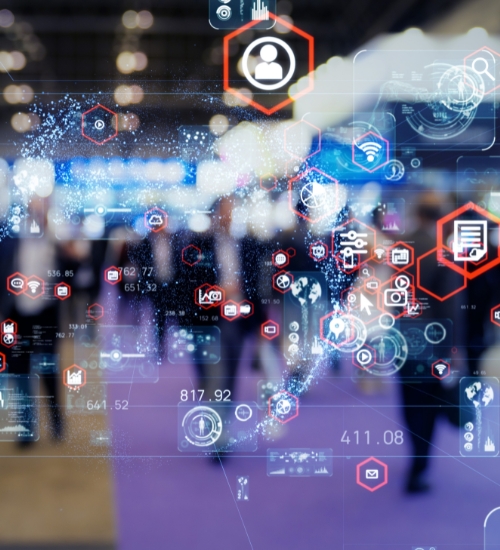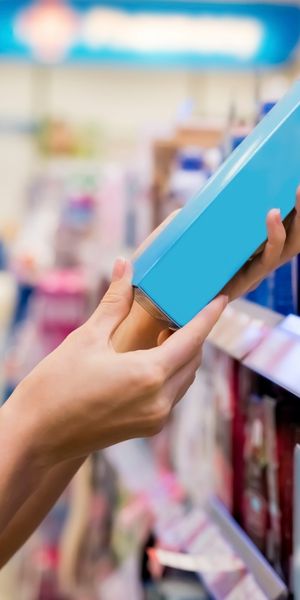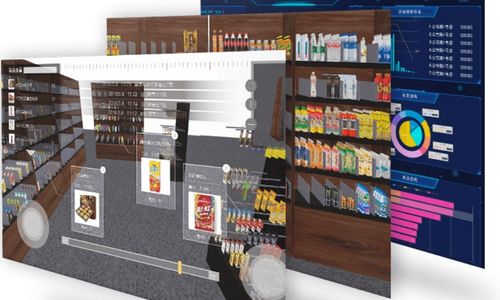Consumer needs are constantly changing and the demand for comfort has never been higher. Kende Retail Operation technology can make unmanned purchases convenient, fast and secure at any time of the day. We offer one of the most advanced store platforms in the world, providing an unparalleled experience for retailers and consumers. Simply taking the products you want off the shelf and walking out of the store with them is an attractive option for time-strapped shoppers. This technology combines the convenience of e-commerce with the benefits of offline shopping.
The use of artificial intelligence in checkout-free stores has significant potential to revolutionise the way we shop and retail, delivering cost efficiencies, driving market growth and increasing customer satisfaction. It provides a significant opportunity for retailers to gather a wealth of relevant data, determine labour usage, reduce waste and improve their margins.
The technology helps to gather data that can be used to define a strategy for store format, product offering and display, and promotional activity. The system can support predictive inventory management by identifying low stock products. Optimising stock levels also reduces waste by ensuring the right products are on the right shelves at the right time. Less waste helps to improve cost efficiency, while also helping to achieve environmental ambitions.

The potential of cashless technology goes beyond food retailers. Other areas, such as stadiums, universities, office buildings or hospitals, can also use MI and automated technology to improve the customer experience. For customers, cashless shops offer a quick, easy and convenient shopping experience, as they no longer have to queue and spend time at the checkout. Buyers can also benefit from an improved product range, stock-level product mix and promotions. Through customer profiling and data usage, customers can also benefit from real- time, personalised discounts.

How it works:
The system uses cameras and weight sensors on shelves to track purchases, eliminating the need for a cashier.
Access to the shop:
With an app downloaded to a smart phone, to which the customer assigns their credit card. Access is via the QR code generated by the app.
With a bank card: the customer touches his/her bank card to a terminal, just like for a traditional purchase, and then enters his/her PIN

Purchase:
Shoppers choose the products they want to buy, even putting them in their own bags. As soon as the product is removed it goes into a virtual shopping cart, when it is put back on the shelf it is removed, even if the customer puts the product back in the wrong place.
Exit from the shop:
No extra payment and no queuing. After exit, the system charges the value of the selected products to the customer's credit card.

The purchase starts when the customer arrives at the store and generates a QR code at the front gate using the app. Hold the code above the reader at the gate to enter the shop. You can then also specify whether you will be shopping alone or in groups.
Once shoppers pass through the gate, the cameras associate their physical form with a virtual shopping cart, linking the products selected by the shopper to their account and ultimately to payment. Many consumers are concerned about how their data is used. This technology does not collect facial recognition data, users' faces are masked and cannot be removed later. Of course, as in the case of a traditional business, this does not apply to security camera recordings, but they are perfectly GDPR compliant.
As the shopper moves around the store, the cameras follow them and their basket. When a customer takes a product off, the technology identifies it and puts it in a virtual shopping cart. The product identification planogram is also a key element of the product identification process. The cameras associate the physical location of the items so that the goods can be properly identified.
If the customer puts the product back, the camera identifies it and removes it from the virtual shopping cart, even if it is in the wrong place. Once the user has completed their purchase, they can simply leave the store and the system will start aggregating their shopping cart. Once the payment is completed, the customer will receive an invoice for the application, which they can download.

1. Traffic increase
The 24/7 operating model ensures uninterrupted service and allows for significantly more transactions than traditional stores. With no checkout and no queue, the customer experience is enhanced and more goods can be displayed. This means satisfied and returning customers, which pays for itself many times over.
2. Optimised sales
An artificial intelligence-based information system analyses the data, supporting management decisions. The information system provides real-time data on current turnover and stock. The system provides constant and real-time access to analyses and reports. In addition, as 41% of shoppers are willing to pay more for a product if they can buy it more quickly and conveniently, retailers have the opportunity to increase average basket value and profit margins.
3. Decreasing operating costs
Workforce supply is already a pressing problem in the retail sector. On the one hand, there are shortages of jobs, and on the other hand, wages have to be constantly increased. Automated technology does not replace employees, but redeploys labour by eliminating the need for a cashier, so you can focus on value-added activities, including - but not limited to - ongoing inventory management, improving product offerings and providing personalised advice to customers.
The regional manager can control and manage the range and operations remotely. Inventory and stock management, which are still manual tasks, will be automated, saving considerable costs.

4. Reduction of shortages identified in inventory and stock management
Shortages, rejects, problems on the supplier side, all accompany the management of the distribution chain. The camera technology and the IT system behind it provide immediate information on any deviations, so the number of thefts is reduced.
5. Customer experience and satisfaction
It is clear that many people find the routine shopping for fast-moving consumer goods boring or downright confusing. The automated store delivers a real experience that meets customer expectations and minimises the waiting and wasted time listed as a problem in all measurements. Whether immediately after the purchase or later, the retailer can receive feedback on customer satisfaction through the app, analysed together with information on the circumstances of the purchase. You can get accurate statistics on how much time shoppers spent in the store, what products they took off the shelf and what they put back, as well as the habits and buying patterns of each customer group. This has triggered a number of in-store surveys. The system accurately records customer journeys and generates a heat map.
